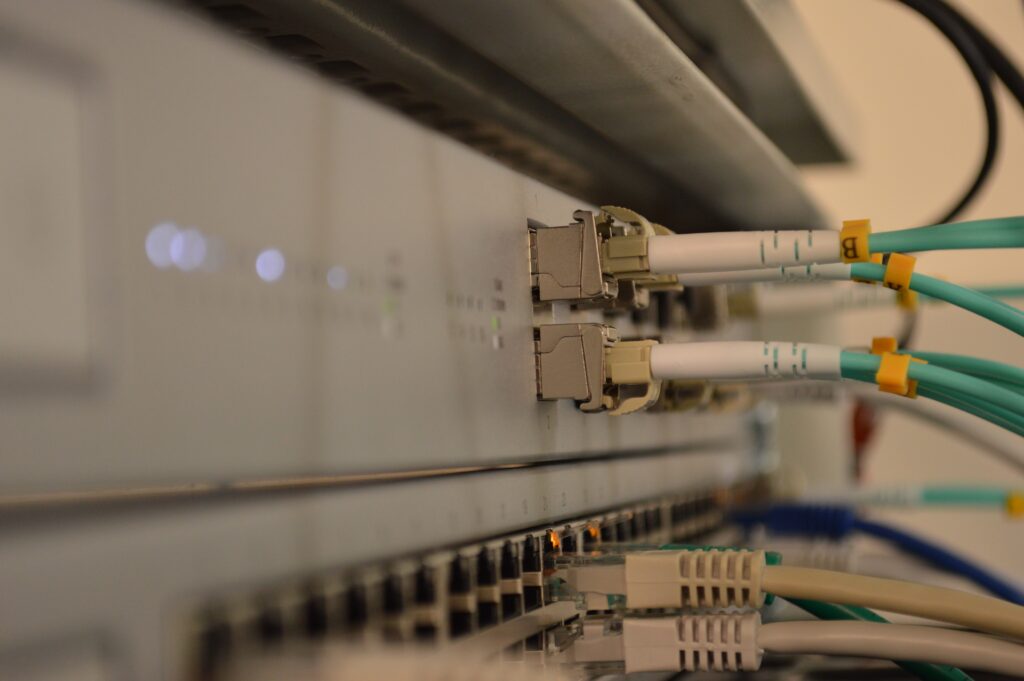The Internet of Things (IoT) has become a pervasive force in today’s landscape, providing transformative opportunities for various industries. With reports estimating the global IoT device usage to nearly double by 2030, many have started to leverage the power of these networks. For mid-sized businesses, the approach can be a game-changer.
Here’s an overview of leveraging IoT networks to boost your business growth.
IoT Networking and Applications
At its core, IoT networking revolves around the interconnectivity between devices and objects, allowing them to collect and exchange data. These networks enable the seamless transfer of information across various devices, presenting businesses with a wealth of real-time data.
From smart sensors to connected machinery, the potential applications of IoT networking are diverse. This makes it an excellent choice for multiple industries, like manufacturing, healthcare, and more. Some of the practical applications of IoT include:
1. Inventory Management
One of the standout applications of IoT for mid-sized businesses lies in inventory management. Sensors strategically placed throughout your warehouse constantly monitor stock levels. For example, these sensors can trigger automatic reordering when supplies are low. It’s a real-time inventory control system that minimizes the risk of stockouts or excess inventory.
IoT also facilitates accurate tracking of products, providing businesses with valuable insights into the movement and lifecycle of the stock.
2. Customer Relationship Management
IoT brings a new dimension to customer relationship management (CRM). Customers have become increasingly demanding, expecting timely and tailored responses. Businesses can use smart devices to monitor and analyze customer behavior to accommodate them. This way, IoT can enable them to offer personalized experiences.
For example, a retail store can use beacons to send custom promotions when they enter the store. It’s not just technology; it’s about creating a more personalized and engaging customer experience.
3. Production Optimization
In the context of mid-sized businesses, IoT networking can revolutionize operational efficiency. Automated equipment sensors, cloud-based control systems, and other connected devices can work together to streamline production processes.
IoT networks allow these devices to communicate in real-time, providing valuable insights into the production line. This communication ensures that every step in the process is synchronized, minimizing delays and maximizing output.
4. Energy and Cost Management
Cost savings are a top priority for any business. IoT-enabled sensors can monitor energy consumption and identify inefficiencies in the production line. You can then optimize energy usage and reduce waste.
Similarly, IoT-connected temperature sensors can monitor temperature fluctuations to ensure critical equipment operates optimally. A focus on energy can provide sustainable and responsible business practices. This helps businesses regulate their businesses more effectively and cut operational costs.
5. Supply Chain Management
The integrated nature of IoT networks extends seamlessly into supply chain management. IoT-enabled devices, such as GPS trackers and RFID tags, offer real-time visibility into the movement of goods. This not only enhances logistics but also improves overall supply chain transparency.
Businesses can track shipments, monitor conditions during transportation, and even predict potential delays. It’s like having a digital eye on your supply chain, allowing for quick decision-making and proactive problem-solving.

Benefits of Using IoT Networking
The advantages of leveraging IoT networks for mid-sized businesses are vast. Some of the key benefits include:
- Real-Time Insights: IoT networking enables businesses to collect and analyze data in real-time. It helps to optimize operations, identify potential problems, and make informed decisions.
- Improved Competitiveness: Data-driven decision-making lets your business quickly adapt to new market trends. This agile framework and innovative customer experiences give you an edge over the competition.
- Empowered Workforce: Access to real-time data and automated tasks empowers your employees to focus on core operations. For example, a retail store can use IoT to free employees to focus on customer service.
- Enhanced Security: By leveraging IoT, businesses can monitor and manage their assets remotely. This enables proactive maintenance, mitigating security risks and reducing downtime.
- Improved Scalability: Seamlessly integrating new devices and expanding the network as the business grows is a significant advantage. Whether adding more sensors to monitor an expanded warehouse or incorporating new IoT-enabled machinery, the scalability of these networks allows them to adapt without a hitch.
Things to Consider
The implementation of IoT networks comes with its considerations. While the benefits are substantial, mid-sized businesses must navigate this technological terrain with a clear strategy. Here are some crucial factors to consider:
- Compatibility and Integration: Before IoT adoption, your business must assess the compatibility of existing systems and networks. Network integration is key to ensuring that your IoT devices can communicate effectively with each other and with your current infrastructure. Think of it as making sure all the instruments in your orchestra play in harmony.
- Costs and ROI: While the benefits of IoT networking are significant, evaluating the costs involved in implementation is crucial. Consider the expenses of acquiring and installing IoT devices and ongoing maintenance. Calculate the potential return on investment (ROI) by weighing the expected benefits against the upfront and ongoing costs.
- Staff Training and Adaptation: Introducing IoT networks means introducing a shift in how things operate. Employees need to adapt to the new technological landscape. Training programs can guide employees through the changes and ensure a smooth transition. An empowered workforce is key to unlocking the full potential of IoT.
- Security and Compliance: Your business must stay on top of compliance requirements to avoid legal complications. The IoT data may be subject to privacy regulations and industry standards. Security measures are also paramount when dealing with any type of network. Implementing robust network security protocols and regularly updating them is crucial.
- Continuous Monitoring and Updates: The technological landscape is ever-changing, and so are the potential threats. Continuous IoT network monitoring is essential to identify and address vulnerabilities promptly. Regular software updates and patches help keep your network secure and up-to-date with the latest security protocols.
The potential for leveraging IoT networks for mid-sized business growth is vast. However, having the right partner is necessary to ensure the best outcome. UCCREW can provide tailored IoT networking services. Our team can optimize your network to accommodate the Internet of Things seamlessly. Contact us today to learn more!


